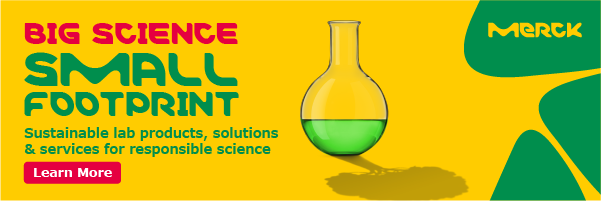Corporate Responsibility
Monsanto makes progress with sustainability initiatives 13th July 2018
Monsanto Company recently reported substantial progress on a host of sustainability commitments and programs in the areas of climate-smart agriculture, water quality, biodiversity, food security and operational efficiencies. The company continues to be guided by its Growing Better Together sustainability plan which has three main focus areas: Better Planet, Better Lives and Better Partner. Through programs and partnerships, Monsanto is collaborating with others to help tackle some of the world’s biggest challenges.
“We’re proud of the actions we’ve put into place and the progress we’ve made on our sustainability commitments over the last six months,” said Pam Strifler, Monsanto’s Vice President for Global Sustainability and Stakeholder Engagement. “We look forward to continuing to use innovation through modern agriculture practices to create sustainable solutions to global challenges.”
While the company continues to strive to make progress toward all its sustainability initiatives and commitments, some of the most notable recent accomplishments include the following:
Completed Agricultural Greenhouse Gas Emissions Tool – In partnership with the National Corn Growers Association and a group working to support the Conservation Innovation Grant, the first step in creating a tool that will help capture the value of reduced greenhouse gas emissions for farmers who use climate-smart agriculture practices has been completed. The tool is currently being validated on 110 Soil Health Partnership farms with plans to broaden the adoption of the system across the agriculture sector.
Introduced Product Innovations – The BioAg Alliance, a collaboration between Monsanto and Novozymes to improve crop harvests, developed Acceleron B-300 SAT, a microbial seed coating that increases nutrient availability which has the potential to lead to larger, stronger root systems that help keep more carbon stored in the soil. A new study estimates that this seed coating could provide a total greenhouse gas (GHG) reduction of around 3.8 million metric tons of carbon emissions per year if applied on all U.S. corn acres that contain Monsanto technology.
Modern Agriculture Demonstration Farm Established – Monsanto worked with farmer, Bill Couser, to develop the Modern Agriculture Demonstration Farm, established in the fall of 2017 in Nevada, Iowa. The farm will provide a unique opportunity for visitors to observe and learn about climate-smart practices at field scale. Visits to the farm include cover crops, trials reviewing different tillage methods and pollinator habitat.
Digital Management Tool Receives NutrientStar Certification – In partnership with Environmental Defense Fund, NutrientStar assessed the Climate FieldView™ nitrogen management tool in 34 on-farm trials and determined that growers can reduce applied nitrogen by an average of 37 pounds per acre while increasing efficiency by 25 percent when following insights provided by the tool.
Investing in Water Quality Trials – Monsanto, along with its subsidiary, The Climate Corporation, recently entered into a partnership with Iowa State University to create an infrastructure project designed to monitor water quality and downstream nitrate loss. The project will provide researchers and farmers with valuable data and information on the practices that help keep nitrogen fertilizer from entering surrounding waterways.
Addressing Acute Hunger and Malnutrition – Monsanto Fund, in partnership with Africare, pledged $5 million over a five-year period to improve nutrition and access to healthy food in Turkana County, Kenya. The project will provide increased access and availability of diverse and nutrient-rich food to pregnant women, new mothers, infants and young children.
Expanding Conservation Habitat – Monsanto spearheaded the launch of Farmers For Monarchs, a united effort by farmers, ranchers, landowners and the agriculture industry to encourage and enable the expansion and establishment of pollinator/conservation habitat, including milkweed, along the monarch butterfly seasonal migration route.
Preserving and Improving Plant Varieties – Monsanto donated 55 conventional cotton germplasm lines to the U.S. Department of Agriculture’s National Cotton Collection. These seed lines are now freely available to both public and private breeders to be used as a resource for the improvement of cotton germplasm across a broad range of environments, including Africa.
Partnering for Restoration – The Appalachian Wildlife Foundation has begun an expansive restoration project that will improve habitats of everything from elk and grassland songbirds to honey bees and monarchs. Monsanto donated 10,000 gallons of herbicide to help areas consumed by overgrowth and weeds. The facility is expected to attract an estimated 500,000 visitors annually, with opportunities to explore the rehabilitated ecosystem and learn about wildlife protection.
Operational Efficiencies – Monsanto now diverts 89% of its waste from landfills by focusing on waste minimization, recycling and reuse. Additionally, six sites in Brazil are pursuing an opportunity to divert 10,000 metric tons of the waste being sent to the landfill annually, which will generate an estimated $500,000 in savings each year in disposal cost.
The company’s plant in Antwerp, Belgium, is investing in a wastewater recycling project that will purify its treated waste for reuse back into its operations, saving an estimated 300,000 cubic meters each year of fresh water withdrawal. The plant also is installing energy recovery technology that will enable approximately $1 million per year in financial improvements.
For more information on Monsanto’s sustainability commitments, view the Monsanto 2017 Sustainability Report, available online at Monsanto.com.



